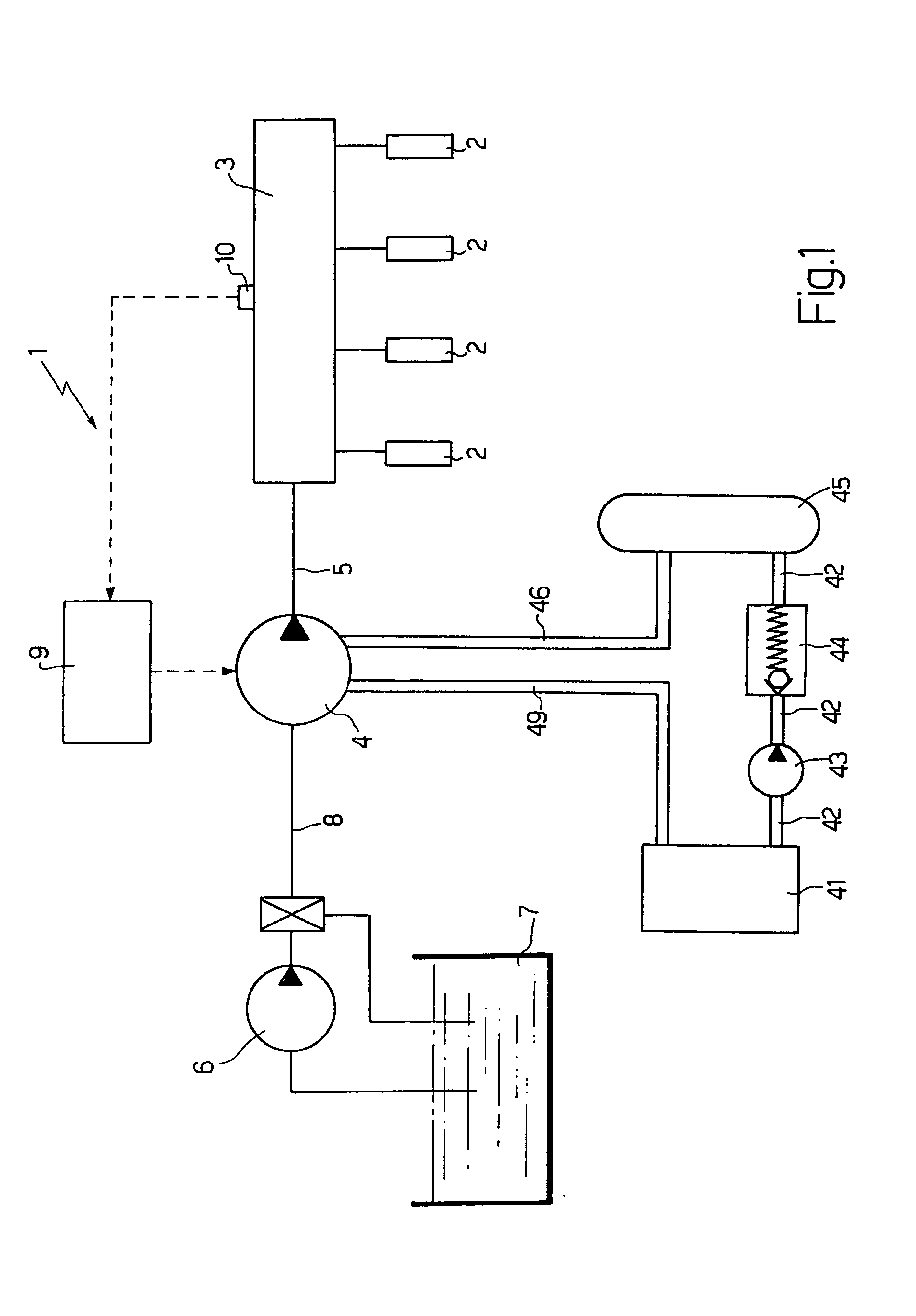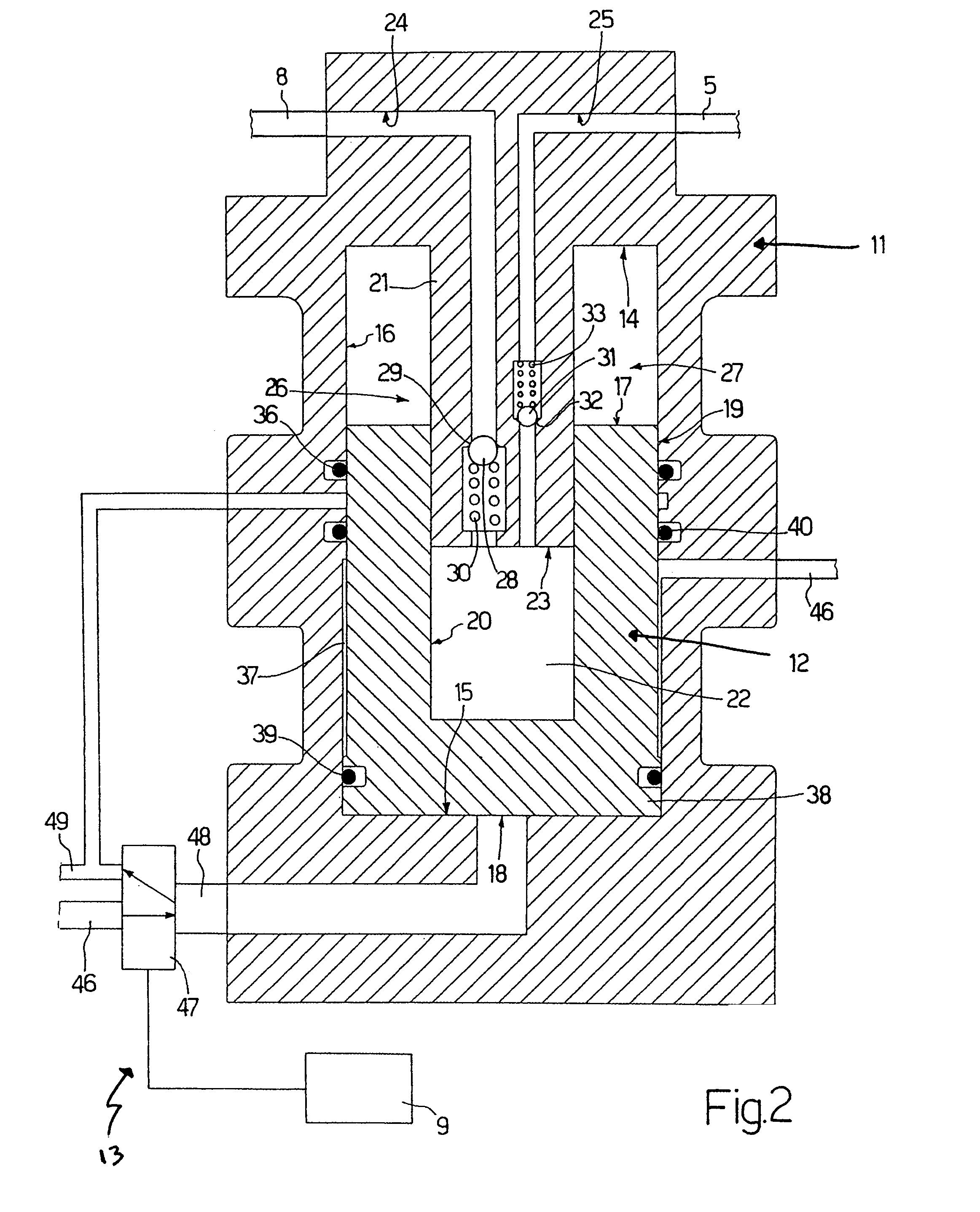Internal combustion engine hydraulic fuel pump
a fuel pump and hydraulic technology, applied in the direction of fuel injecting pump, fuel injection apparatus, electrical control, etc., can solve the problems of overheating fuel, high energy efficiency of the above type of injection system, and prone to heat, so as to achieve the effect of cheap and easy production
- Summary
- Abstract
- Description
- Claims
- Application Information
AI Technical Summary
Benefits of technology
Problems solved by technology
Method used
Image
Examples
Embodiment Construction
[0018]Number 1 in FIG. 1 indicates as a whole a common-rail system for direct fuel injection into an internal combustion engine having four cylinders (not shown in detail). Injection system 1 comprises four injectors 2, each of which injects fuel directly into the top of a respective cylinder (not shown in detail) of the engine, and is supplied with pressurized fuel by a common rail 3. A high-pressure pump 4 feeds fuel to common rail 3 along a pipe 5, and is supplied with fuel by a low-pressure pump 6, which draws fuel from a tank 7 and is connected to high-pressure pump 4 by a pipe 8.
[0019]A control unit 9 regulates the delivery of high-pressure pump 4 to keep the fuel pressure in common rail 3 equal to a desired value, which normally varies as a function of engine operating conditions. Control unit 9 preferably regulates the delivery of high-pressure pump 4 by feedback control, using, as a feedback variable, the real-time fuel pressure value in common rail 3 detected by a sensor 1...
PUM
 Login to View More
Login to View More Abstract
Description
Claims
Application Information
 Login to View More
Login to View More - R&D
- Intellectual Property
- Life Sciences
- Materials
- Tech Scout
- Unparalleled Data Quality
- Higher Quality Content
- 60% Fewer Hallucinations
Browse by: Latest US Patents, China's latest patents, Technical Efficacy Thesaurus, Application Domain, Technology Topic, Popular Technical Reports.
© 2025 PatSnap. All rights reserved.Legal|Privacy policy|Modern Slavery Act Transparency Statement|Sitemap|About US| Contact US: help@patsnap.com



